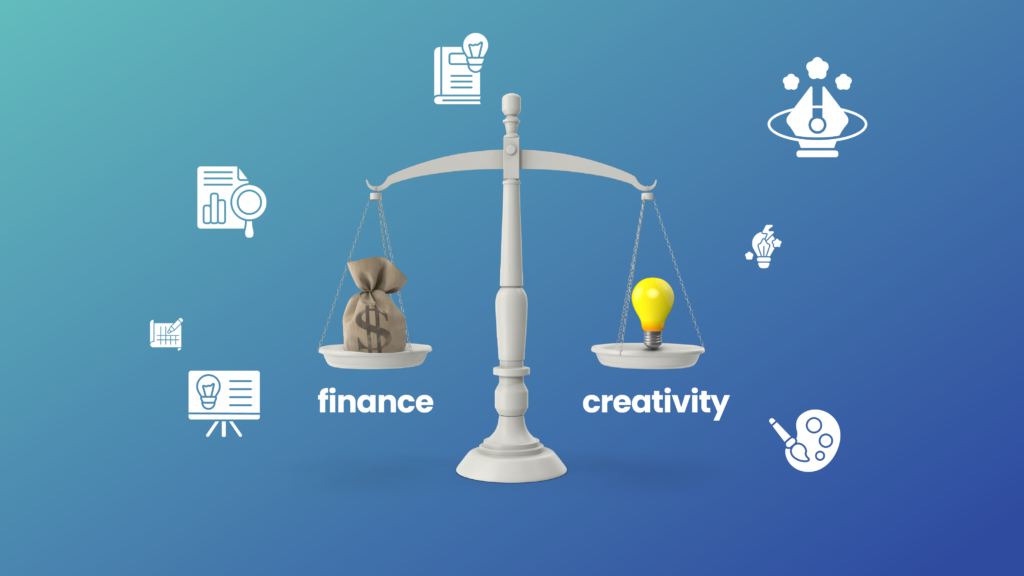Creativity isn’t just about aesthetics—it’s a powerful tool that directly impacts profitability and drives revenue growth. In this blog, which is based on the Talent Talks podcast episode, we explore how creativity in direct-to-consumer (DTC) brands can be leveraged as a key operational asset.
Here’s what we’ll cover:
- How creativity impacts brand profitability
- Treating creativity as a strategic, operational challenge
- Insights from industry experts on common creative pitfalls
- The agency vs. freelancer debate
- Balancing innovation with budget constraints
After reading this post, you’ll discover how integrating creativity into your operational strategy can unlock new growth opportunities, boost efficiency, and set your brand apart.
Maximizing ROI: Creativity as a Strategic Revenue Driver

Creativity is often viewed as an aesthetic or peripheral concern for direct-to-consumer brands. However, creative work can also be leveraged as an operational asset to drive efficiency and profitability.
Beyond Aesthetics: Creativity as a Strategic Asset
For DTC brands, creativity isn’t just about eye-catching visuals. It’s a crucial operational asset that can drive profitability and efficiency. When harnessed effectively, creative work becomes a strategic challenge that impacts every aspect of your business.
Inefficiencies in the creative process can significantly hinder brand profitability. From concept development to final execution, each step must be optimized for maximum impact. This is where the expertise of professionals like Aycee (CEO), Coco (Accounts Director), and Paula (Art Director) becomes invaluable.
The Creative Team’s Impact on Revenue Generation
Creative teams are pivotal in shaping a DTC brand’s identity and market position. They bring unique value to the table:
- Aycee provides strategic direction, aligning creativity with business goals.
- Coco ensures client needs are met while maintaining brand integrity.
- Paula translates concepts into visually compelling assets that resonate with target audiences.
By treating creativity as an operational priority, DTC brands can unlock new levels of efficiency and effectiveness in their marketing efforts. This approach enhances brand identity and drives long-term profitability through streamlined processes and data-driven decision-making.
Cost-Saving Solutions: Avoiding Common Creative Pitfalls
Direct-to-consumer brands face unique challenges in optimizing creativity to drive business growth. Several common mistakes can derail even the best-intentioned creative efforts. However, with careful planning and strategy, DTC brands can avoid many pitfalls and leverage creativity as a competitive advantage.
Over-Reliance on Freelancers
Many DTC brands make the mistake of relying too heavily on freelancers for their creative needs. While freelancers can offer flexibility, they may lack a deep understanding of your brand’s identity and long-term goals. To address this, consider partnering with an experienced agency providing a dedicated team familiar with your brand’s vision and values.
Misalignment with Data-Driven Insights
Another common pitfall is failing to align creative work with data-driven insights. Customer behavior, market trends, and performance metrics should inform creativity in DTC brands. Implement a system where your creative team regularly collaborates with your data analysts to ensure that designs and campaigns are visually appealing and strategically sound.
Neglecting Creative Talent Growth
DTC brands often overlook the importance of nurturing and developing their creative talent. This can lead to stagnation in ideas and a lack of innovation. Invest in ongoing training and professional development for your creative team. Encourage them to stay updated with the latest design tools, marketing strategies, and industry trends to keep your brand’s creativity fresh and competitive in the ever-evolving DTC landscape.

Optimizing Creative ROI: Balancing Innovation and Budget

Many DTC brands struggle to balance creative innovation with budgetary constraints. Contrarily, constant creativity and fresh ideas are crucial for staying relevant and engaging customers. On the other hand, budgets are often limited, necessitating cost-effective solutions. Achieving this balance requires careful planning and prioritization of creative initiatives. Some approaches to consider include:
Maximizing Value with Limited Resources
For DTC brands, striking the right balance between creative innovation and budget constraints is crucial. To achieve this, clearly define your value proposition and leverage creative variations. You can create impactful campaigns without breaking the bank by focusing on your core message. Utilize A/B testing to experiment with different creative elements, allowing you to optimize your marketing efforts while staying within budget.
The Power of Detailed Briefs
Providing comprehensive, detailed briefs to your creative team is essential for efficient resource allocation. A well-crafted brief ensures everyone is aligned on project goals, target audience, and brand voice. This clarity helps prevent costly revisions and allows creatives to deliver high-quality work that meets your expectations within budget constraints.
Long-Term Profitability Mindset
When balancing creativity and budget, it’s vital to consider long-term profitability. Invest in evergreen content and reusable assets that can be repurposed across multiple campaigns. This approach stretches your budget and creates a cohesive brand identity over time. Thinking strategically about your creative investments can build a strong foundation for sustainable growth in the competitive DTC landscape.
Data-Driven Design & Creative Adaptation

Strategic creative work directly impacts DTC brand profitability. By combining data-driven design with AI capabilities, agencies enable clients to adapt quickly to market shifts while optimizing creative production costs.
Harnessing the Power of Data
Data-driven design allows brands to make informed decisions about their creative strategies. By analyzing customer behavior, market trends, and campaign performance, creative teams can tailor their designs to resonate with target audiences. This approach enhances the effectiveness of marketing efforts and contributes to operational efficiency.
Adapting to Market Changes
Quickly adapting creative assets is essential for DTC brands operating in dynamic markets. Agencies equipped with AI-powered tools can rapidly generate variations of designs, allowing brands to test and iterate their creative content efficiently. This agility ensures that brands remain relevant and competitive, even as consumer preferences shift.
Balancing Creativity and Efficiency
While data and AI play crucial roles in modern creative processes, balancing automation and human creativity is important. The most successful DTC brands leverage technology to handle repetitive tasks, freeing up their creative teams to focus on high-value, innovative work that truly sets the brand apart in the marketplace.
Ensuring Campaign Success Through Collaboration and Alignment

A collaborative approach between creative teams and clients is essential for campaign success. By aligning on goals, key messages, and audience insights, partners can ensure creative work reflects strategic objectives and effectively resonates with target consumers.
Data-Driven Decision Making
Incorporating data into your creative process is essential for DTC brands looking to maximize their impact. Utilize analytics to inform design choices and content strategies. This approach allows you to create campaigns that resonate with your target audience while supporting your operational objectives.
Building Strong Relationships
Strong relationships between creative teams and brand managers are key to campaign success. Regular communication and feedback loops help ensure creativity remains aligned with brand identity and business goals. This collaborative approach allows for agile adjustments and helps prevent costly missteps in the creative process.
Embracing Technological Tools
Leverage AI and other technological tools to streamline your creative operations. These resources can help automate repetitive tasks, allowing your creative team to focus on high-value work that drives innovation and profitability. By embracing these tools, DTC brands can enhance their creative output while maintaining operational efficiency.
Conclusion
In conclusion, turning creativity into an operational asset is crucial for DTC brands seeking to drive profitability and growth. Treating creative work as a strategic priority rather than an afterthought can unlock significant value and efficiency.
Remember to align your creative efforts with data-driven insights, leverage experienced agency partnerships, and nurture your creative talent. Embrace the evolving landscape of creative tools and technologies, but always keep your brand’s vision at the forefront.
As you navigate the challenges of the DTC market, remember that effective creative strategy is not just about aesthetics—it’s a powerful operational lever that can propel your brand to new heights of success and profitability.
This article was inspired by insights shared during a Talent Talks episode, where industry leaders discussed the intersection of creativity and operational excellence in DTC brands.




